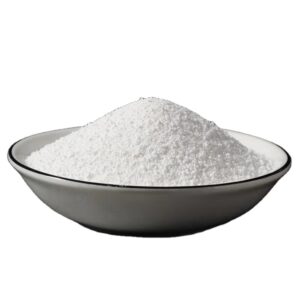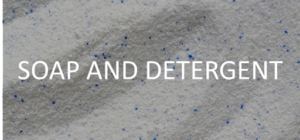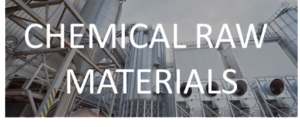Soda Ash Dense Overview
Soda ash also known as sodium carbonate with the chemical formula of Na2CO3, is an alkali chemical extracted from the mineral trona or naturally occurring sodium carbonate-bearing brines (both referred to as natural soda ash), the mineral nahcolite (also referred to as natural sodium bicarbonate, from which soda ash can be produced), or produced through one of several chemical processes (referred to as synthetic soda ash).  The following is a general classification of commercially available soda ash production processes:
The following is a general classification of commercially available soda ash production processes:
1. Refined natural soda ash
2. Caustic soda carbonation
3. By-product of alumina production
4. Synthetic manufacturing employing as feedstocks salt, carbon dioxide, and ammonia
Soda ash found in subsurface sediments and lakes in the United States and Kenya is processed using the first approach. Caustic soda (a byproduct of chlorine synthesis) combines with carbon dioxide to form soda in the second process, however this method is not employed for industrial manufacturing since caustic soda supply is unreliable. Alumina was extracted from bauxite, which was collected as a by-product of soda, using a third process that dates back to the Soviet era. The USSR manufactures 500,000 tons of soda every year using this technology. The fourth process is commonly recognized as the most widely utilized soda synthesis procedure.
1. Solvay process.
2. Hou Process
3. Full Ammonium Chloride (AC) Co-production Process
4. Partial Ammonium Chloride (AC) Co-production Process
Soda Ash Dense Manufacturing Process
A, SOLVAY PROCESS
This is the oldest of the three processes, commonly known as the ammonia-soda process. The reaction between the main raw components, salt and limestone, is as follows.
CaCO3 + C → CaO + CO2 (1)
CaO + H2O → Ca(OH)2 (2)
NaCl + NH3 + CO2 + H2O → NaHCO3 + NH4Cl (3)
2NH4Cl + Ca(OH)2 → CaCl2 + 2NH3 + 2H2O (4)
2NaHCO3 → Na2CO3 + CO2 + H2O (5)
and could be simplified to
2NaCl + CaCO3 → Na2CO3 + CaCl2 (6)
Salt, ammonia, and carbon dioxide react to generate thick ash and intermediate ammonium chloride as the major reaction of manufacturing process (3). Sedimentation separates dense ash from lighter ash. Slaked lime is used to degrade ammonium chloride from the mother liquor in reaction (4). The reaction (3) recycles the recovered ammonia, and inventory is only required to compensate for the loss. In a kiln, thick ash is heated, and soda ash is produced from carbon dioxide and recycled, as in the reaction (5).
The Solvay process is inefficient because it requires too much energy to generate the heat of (4), with a salt yield of less than 73% and no proper utilization of the calcium chloride by-product. Calcium chloride, unreacted salt, slaked lime, and calcium carbonate are all found in the decomposing mother liquor. When purified calcium chloride is required, the technique described above is followed to produce it. The slaked lime reacts with the mother liquor and carbon dioxide to form calcium carbonate, which precipitates in the thickener and is removed from the system. The crystalline ammonia is separated as a product from the overhead thickener solution in an evaporator. During the evaporation process, salt is also recovered.
The above approach is not recommended as large amounts of calcium chloride are rarely needed. Alternatively, the mother liquor can be pumped to a settling tank to allow the insoluble material to settle and leave an overhead solution.
B. HOU PROCESS
Hou Debang, a Chinese scientist, invented the method in the 1930s. It is mainly used in small coal-fired power plants in China, and like the Solvay process, it has an annual production capacity of 210,000 tons, which is equivalent to 25% of the world's production capacity. The Hou procedure produces ammonium chloride rather than calcium chloride as a by-product (fertilizer). The following reaction expands the carbon dioxide by-product of steam reforming with saturated sodium chloride and ammonia to make sodium bicarbonate:
NH3 + CO2 + H2O → NH4HCO3 (1)
NH4HCO3 + NaCl → NH4Cl + NaHCO3 (2)
Because of its limited solubility, sodium bicarbonate was collected as a precipitate and cooked to produce pure sodium carbonate in the Solvay method' final stage.
2NaHCO3 → Na2CO3 + CO2 + H2O (3)
The Hou process requires more energy than the Solvay process, consuming roughly 14.25 GJ per ton of soda ash.
C. FULL AMMONIUM CHLORIDE (AC) CO-PRODUCTION PROCESS
This method was invented in Japan, where salt resources are scarce, and it is now commercially employed there. When ammonium chloride is required, low energy is required since no heat is required to regenerate ammonia. This lowers the cost of soda ash production. The reaction is as follows:
NaCl + CO2 + NH3 → NaHCO3 + NH4Cl (1)
2NaHCO3 → Na2CO3 + CO2 + H2O (2)
which could be simplified to
2NaCl + CO2 + 2NH3 + H2O → Na2CO3 + 2NH4Cl (3)
The carbonization and crystallization of ammonium chloride are the two processes in the reaction (1). The sodium bicarbonate separator's mother liquor reacts with ammonia and then combines with powdered salt to form ammonium chloride. The produced ammonium chloride is separated by crystallization and chilling, followed by the addition of a thickener. The crystalline ammonium chloride is prilled and dried to make the final product, with the overhead thickening solution recycled to the ammonia absorption section.
Sodium bicarbonate is heated in a calciner to break into carbon dioxide and sodium carbonate (soda ash), as indicated in Scheme (2). The carbon dioxide is then recycled back into the carbonation portion. The recirculating solution grows in this process as moisture and impurities arise in the salt production, and these contaminants accumulate. To remove contaminants from the system, a specific amount of circulating solution must be purged.
D. PARTIAL AMMONIUM CHLORIDE (AC) CO-PRODUCTION PROCESS
This process recovers ammonia by adding quick lime to the waste and adding some of the ammonia recovery to the total ammonium chloride process when the need for ammonium chloride is limited. It is basically the same as the co-production process of total ammonium chloride. As with the Solvay method, chlorine is converted to calcium chloride and ammonia is reused in the process. This technique has the advantages of a high salt production and low energy usage when compared to the Solvay process.
Soda Ash Dense Applications
Soda ash is an important raw material for the production of glass, detergents and soaps, and chemicals. It's also employed in a variety of other manufacturing operations.

Soda ash dense uses in the glass industry are to manufacture soda-lime-silica glass, which is commonly used in flat glass (automotive and construction), glass containers (food and drink), and a variety of other glass applications.
Three important elements are included in the soda-lime-silica glass. The glass-forming oxide is silica (sand), while lime offers chemical stability and soda ash serves as a fluxing agent. Soda ash is important because it lowers the furnace temperature required to melt the silica, lowering the energy required to make glass. As a low-cost source of Na2O, it usually provides the majority of the alkali element required in glass production.
The glass industry is divided into several segments, each of which uses a different manufacturing process:
Flat glass is largely used in the automobile (laminated and tempered glass) and building (windows and doors) industries. These two divisions are responsible for 60% and 30% of all flat glass shipments, respectively. Mirrors, solar panels, signage, and optical glass are among the industries that use the balance.
The glass container industry is a thriving business. This market is dominated by beverage bottles, with beer bottles leading the way, followed by wine and non-alcoholic drinks bottles. The food container market is also very important, as are toiletries and cosmetics, as well as laboratory glassware. In this industry, colored glasses are common, with amber (dark brown) containers for beer and a variety of green containers for wine. Food and drink products are served in clear flint glasses.
Lighting, technical glass for video displays, televisions, solar panels, insulation glass (fibers), foam glass, and a variety of other "specialty" glasses are among the various glass businesses.
The glass business is a rapidly expanding market where cutting-edge technologies are always being enhanced to ensure that more sophisticated goods may be produced faster and at a lower cost. Furthermore, new technical specialty and functionality glasses, such as security, multi-laminated, and self-cleaning glasses, are constantly being brought to the market.

Soda ash dense uses in detergent industry as a builder to emulsify oil stains, minimize the deposit of dirt during washing and rinsing, provide alkalinity for cleaning, and to soften laundry water in a variety of laundry and cleaning compound formulations. Soda ash is also a component of sodium tripolyphosphate (STPP), another important detergent ingredient.
Ultramarine, which gives white garments a dazzling appearance, is made from soda ash. Soda ash is used in shampoos as a pH modifier, while soda ash precipitate is used in toothpaste as a soft abrasive. Soda ash is also a significant ingredient in the manufacture of percarbonates, silicates, and phosphates, which are widely used in household cleaning products.

Soda ash is used in the synthesis of essential inorganic compounds such as silicates, phosphates, chromates, and percarbonates as a source of sodium ions. The carbonate ion is essential for the manufacture of metal carbonates such as zirconium, nickel, and cobalt, as well as large-scale brine purification.

Granular soda ash is a high-quality product and can be used in the steel industry to eliminate sulphur from iron ore, make slag more fluid, and smooth blast furnace operations during the production of iron and steel.
Soda Ash Dense Specification
| PRODUCT IDENTIFICATION | ||
| Synonyms | : | sodium carbonate |
| CAS No.: | : | 497-19-8 |
| HS Code: | : | 2836.20.00 |
| Molar mass | : | 105.98 g/mol |
| Chemical Formula | : | Na2CO3 |
| SALES SPECIFICATION | ||
| Appearance | : | colorless crystal or white, granular or crystalline powder |
| Na2CO3 | : | 99% (min) |
| Water Insoluble | : | 0.3 (max) |
| Bulk Density | : | 0.80 - 1.15 g/cm3 |
| Loss on Drying | : | 2 (max), (70°C rasing gradually to 300°C, to constant weight) |
Soda Ash Dense TDS
Soda Ash Dense MSDS

